How to Enable or Disable a Sound Output Device in Windows 10
In Windows 10, the user can specify the default sound output device. This can be speakers, a Bluetooth device, headphones, or other audio device connected to your PC or built into your device. Today, we will see how to disable or enable a sound device in Windows 10.
Advertisеment
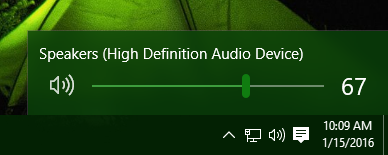
Note: In a number of situations, the Volume icon can be hidden in the taskbar. Even when you have all the drivers installed, the icon might remain inaccessible. If you are affected by this issue, see the following post:
Fix: Volume Icon is Missing in Windows 10 Taskbar
Tip: It is still possible to restore the good old "classic" sound volume control.
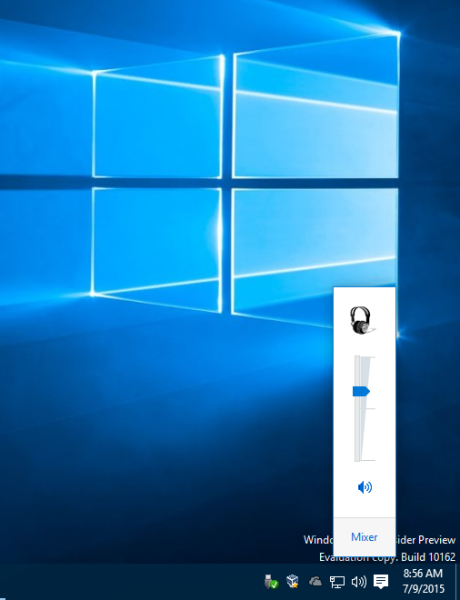
Refer to the following article:
How to enable the old Volume control in Windows 10
The default sound input device is the device that the operating system uses to record or hear sounds. If you have connected several audio devices to your PC or laptop, such as microphones, a web camera with a built-in microphone, a Bluetooth headset, you might want to disable one or a few of them. This can be done with Settings, Device Manager, using the classic Control Panel, or with a Registry tweak. Let's review these methods.
To Disable a Sound Output Device in Windows 10,
- Open the Settings app.
- Go to System > Sound.
- On the right, select the sound output device under Output.
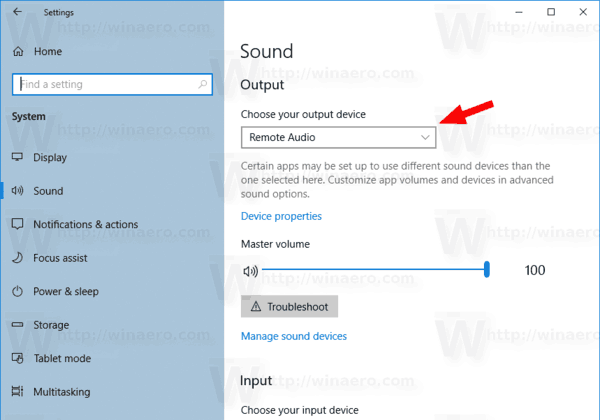
- Click on the Device Properties link.
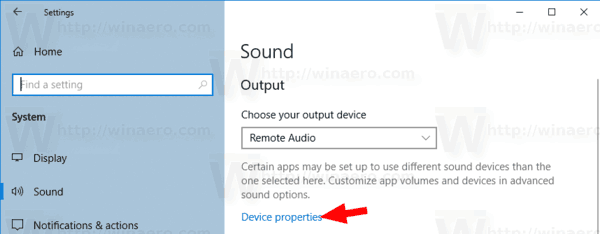
- On the next page, check the Disable box to disable the device. It is unchecked by default.
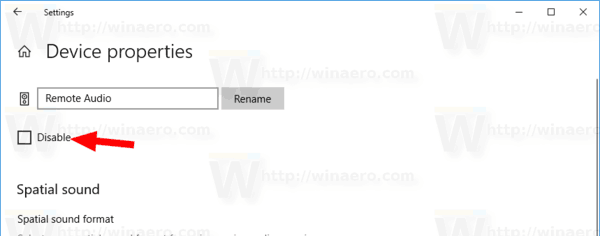
- Uncheck the Disable box to re-enable the device.
You are done.
Also, there is an extra page in Settings that you can use to disable sound devices. It is called Manage sound devices.
Disable a Sound Output Device with Manage sound devices Page
- Open the Settings app.
- Go to System > Sound.
- On the right, click on the link Manage sound devices under Output.
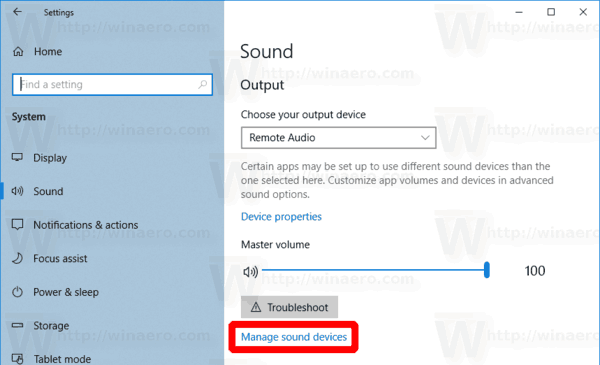
- On the next page, select your sound output device in the list in Output devices.
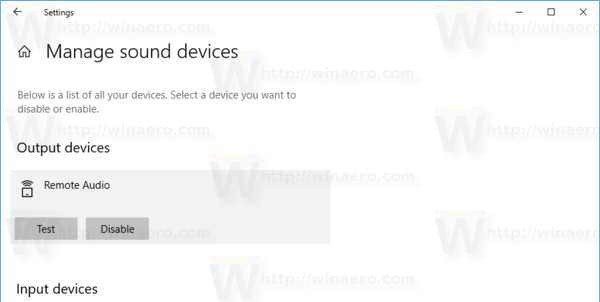
- Click on the Disable button to disable the selected device.
- Click on the Enable button to enable the disabled device.
You are done.
Besides the Settings app, you can use the good old Device Manager app to enable or disable devices, including the sound devices installed in your computer.
Disable Sound Output Device in Device Manager
- Press Win + X keys together on the keyboard and click Device Manager.

Tip: you can customize the Win + X menu of Windows 10.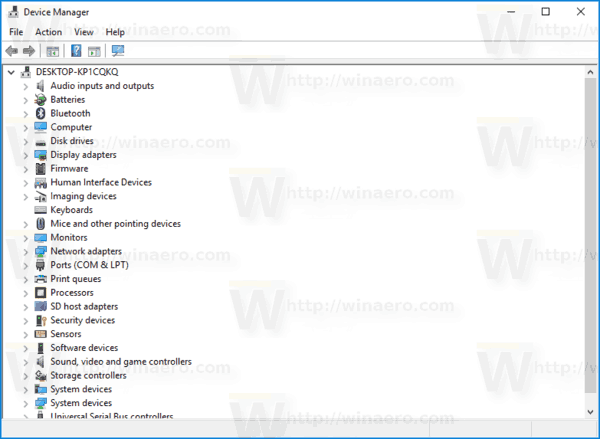
- In the device tree, find your device under Audio inputs and outputs.
- Right-click on the device and select Disable from the context menu to disable it.
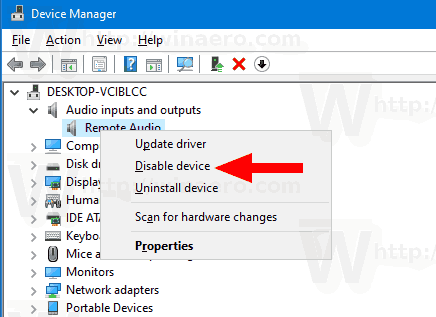
- To enable the disabled device, right-click on it and select Enable from the context menu.
- Confirm the operation if prompted.
You are done.
Also, the classic Control Panel applet 'Sound' can be used to disable or enable a sound output device.
Disable a Sound Output Device using Control Panel
- Open the classic Control Panel app.
- Navigate to Control Panel\Hardware and Sound\Sound.
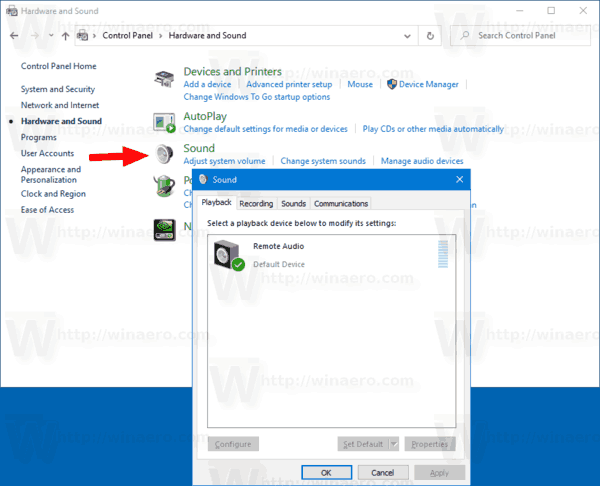
- On the playback tab, select the device you want to disable.
- Right-click on it and select Disable from the context menu. This will disable the sound output device.
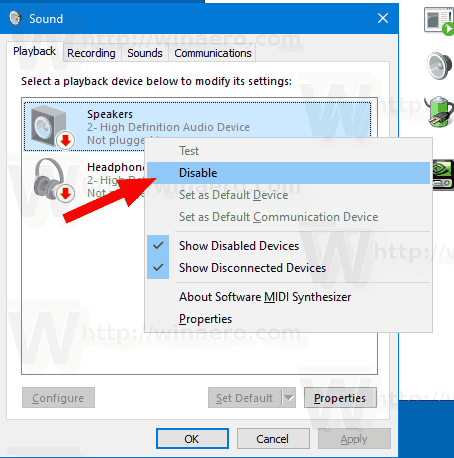
You are done.
To enable a disabled sound output device, do the following.
- Ensure that you have the disabled devices listed: Right-click on any device and see if you have the Show disabled devices entry checked. If not, click on it.
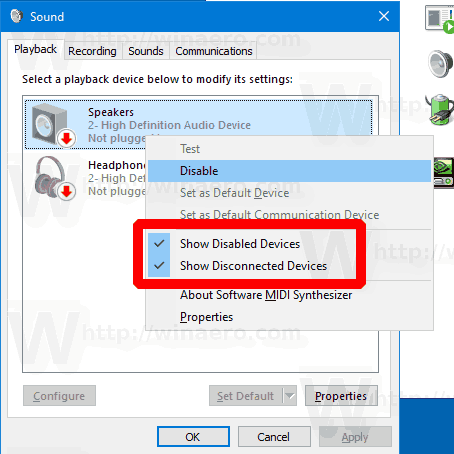
- Now, right-click on a disabled device in the list.
- Select Enable from the context menu.
- This will enable the disabled device.
You are done!
Tip: To save your time, you can open the classic Sound dialog using the following command:
rundll32.exe shell32.dll,Control_RunDLL mmsys.cpl,,1
Refer to the next article:
Windows 10 Rundll32 Commands – the complete list
Finally, you can disable or enable a sound output device in the Registry. Here is how.
Disable a Sound Output Device in Registry
- Open the Registry Editor app.
- Go to the following Registry key.
HKEY_LOCAL_MACHINE\SOFTWARE\Microsoft\Windows\CurrentVersion\MMDevices\Audio\Render
See how to go to a Registry key with one click.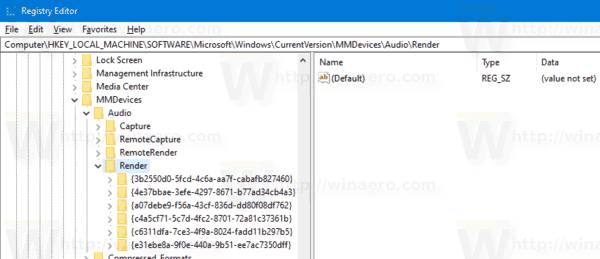
- In the left pane, expand the Render key and open the Properties subkey of each GUID until you find the device you want to disable.
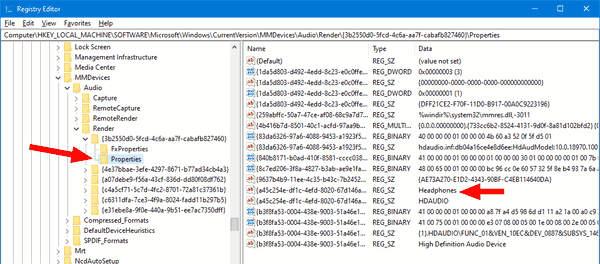
- On the right of the appropriate GUID key, modify or create a new 32-Bit DWORD value DeviceState.
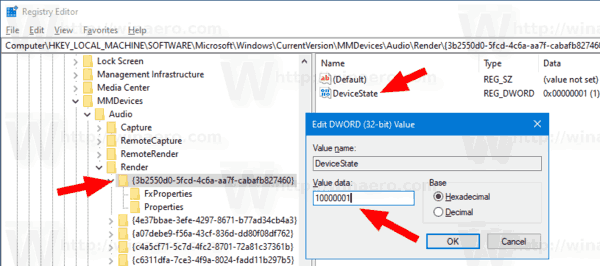
Note: Even if you are running 64-bit Windows you must still create a 32-bit DWORD value. - Set its value data to 1 to enable the device.
- A value data of 10000001 will disable it.
That's it!
Articles of interest:
- Change Default Sound Input Device in Windows 10
- Rename Audio Device In Windows 10
- Set Audio Output Device For Apps Individually in Windows 10
- How to Adjust App Sound Individually in Windows 10
- How to Change Default Audio Device in Windows 10
- How To Open Classic Sound Options in Windows 10
- How To Enable Spatial Sound in Windows 10
Support us
Winaero greatly relies on your support. You can help the site keep bringing you interesting and useful content and software by using these options:

The “rundll32.exe shell32.dll,Control_RunDLL mmsys.cpl,,0” command opens the “Sound” window in “Playback” tab. What if I want to open “Sound” -> “Playback”(tab) -> “Speakers” -> “Tone” or “Levels”(tab) ?
Can I do this somehow?
Thanks
hi please how to remove sound from input to uotput